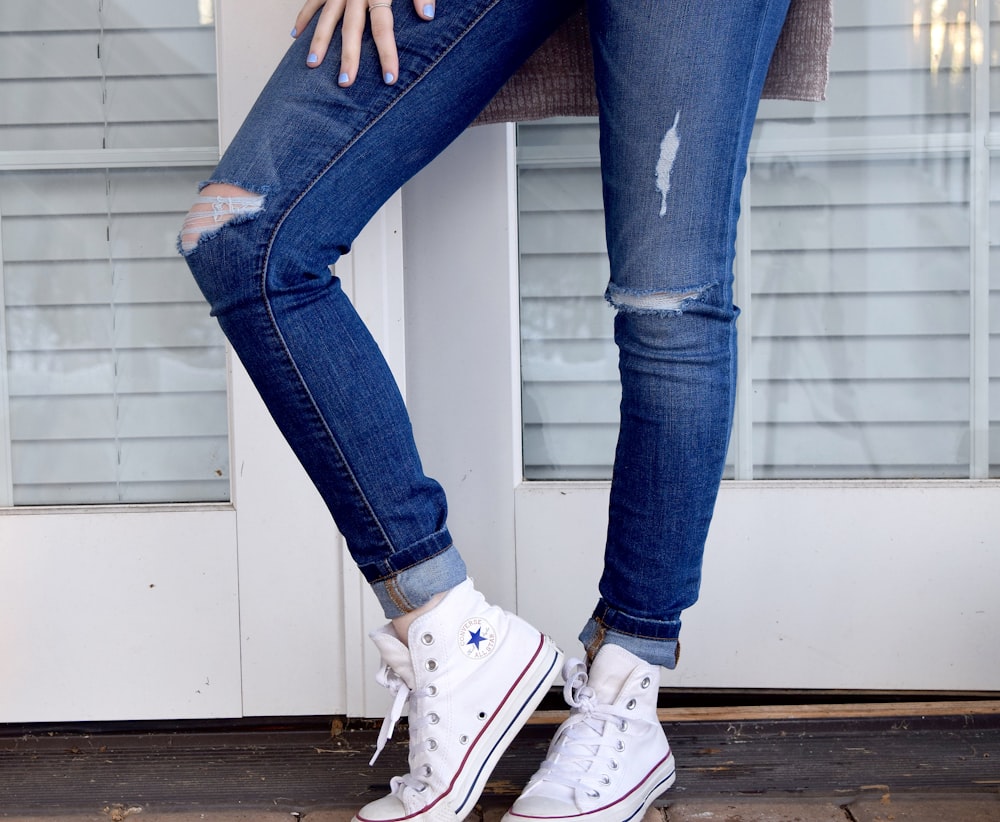目次
片脚起立が10秒できるかどうかが死亡率と関連?
開眼片脚起立時間の測定は昔から理学療法士・作業療法士がバランス機能を評価する為に行うことの多い検査の1つです.
道具もストップウォッチ以外には必要ありませんし,どこでも簡単にできるのが良いですよね.
この片脚起立ですが実は将来的な死亡率と関連するといった話もあります.
今回は片脚起立が10秒できるかどうかが死亡率と関連するといったお話です.

今回ご紹介する論文
Br J Sports Med. 2022 Jun 21;bjsports-2021-105360. doi: 10.1136/bjsports-2021-105360. Online ahead of print.
Successful 10-second one-legged stance performance predicts survival in middle-aged and older individuals
Claudio Gil Araujo 1, Christina Grüne de Souza E Silva 2, Jari Antero Laukkanen 3 4, Maria Fiatarone Singh 5, SetorKunutsor 6, Jonathan Myers 7, João Felipe Franca 2, Claudia Lucia Castro 2
Affiliations expand
PMID: 35728834 DOI: 10.1136/bjsports-2021-105360
今回ご紹介する論文は2022年に掲載された論文です.
研究の目的
Objectives: Balance quickly diminishes after the mid-50s increasing the risk for falls and other adverse health outcomes. Our aim was to assess whether the ability to complete a 10- s one-legged stance (10-second OLS) is associated with all-cause mortality and whether it adds relevant prognostic information beyond ordinary demographic, anthropometric and clinical data.
50代半ば以降,バランス感覚は急速に低下し,転倒やその他の健康上の不利益を被るリスクが高まります.
この研究では10秒間の片脚起立が全死亡率と関連するかどうか,また通常の人口統計学的データ,身体測定データ,臨床データ以外に予後に関する情報を付加するかどうかを評価することを目的としております.
研究の方法
Methods: Anthropometric, clinical and vital status and 10-s OLS data were assessed in 1702 individuals (68% men) aged 51-75 years between 2008 and 2020. Log-rank and Cox modelling were used to compare survival curves and risk of death according to ability (YES) or inability (NO) to complete the 10-s OLS test.
2008年から2020年にかけて,51~75歳の1702例(68%が男性)を対象として基礎的データ,臨床的データ,死亡率,10秒間の片脚起立のデータを評価しております.
ログランクテストならびにCox比例モデルを用いて,10秒間の片脚起立ができるかどうかに応じて生存曲線および死亡リスクを比較しております.
研究の結果
Results: Overall, 20.4% of the individuals were classified as NO. During a median follow-up of 7 years, 7.2% died, with 4.6% (YES) and 17.5% (NO) on the 10-s OLS. Survival curves were worse for NO 10-s OLS (log-rank test=85.6; p<0.001). In an adjusted model incorporating age, sex, body mass index and comorbidities, the HR of all-cause mortality was higher (1.84 (95% CI: 1.23 to 2.78) (p<0.001)) for NO individuals. Adding 10-s OLS to a model containing established risk factors was associated with significantly improved mortality risk prediction as measured by differences in -2 log likelihood and integrated discrimination improvement.
20.4%の人が10秒間の片脚起立が困難でありました.
中央値7年の追跡期間中に,7.2%が死亡し,10秒間の片脚起立が可能な群では死亡率は4.6%,10秒間の片脚起立が困難な群では死亡率は17.5%(NO)でありました.
生存曲線は10秒間の片脚起立が困難な群で悪化しておりました(log-rank test=85.6; p<0.001).
年齢,性別,肥満度,併存疾患を組み込んだ調整モデルでは,全死亡のハザード比は10秒間の片脚起立が困難な群で高い結果でありました(1.84(95%CI:1.23~2.78)(p<0.001)).
確立された危険因子を含むモデルに10秒間の片脚起立の可否を加えることは,-2対数尤度の差と統合された識別力の向上で測定される死亡リスク予測の有意な改善と関連しておりました.
研究の結論
Conclusions: Within the limitations of uncontrolled variables such as recent history of falls and physical activity, the ability to successfully complete the 10-s OLS is independently associated with all-cause mortality and adds relevant prognostic information beyond age, sex and several other anthropometric and clinical variables. There is potential benefit to including the 10-s OLS as part of routine physical examination in middle-aged and older adults.
最近の転倒歴や身体活動などの非制御変数の制限の中で,10秒間の片脚起立能力は,全死亡と独立して関連しており,年齢,性別,その他いくつかの身体測定および臨床変数の他に適切な予後情報を付与するものであります.
中高年のルーチン健康診断に10秒間の片脚起立検査を取り入れることは有益である可能性があります.
今回は片脚起立が10秒できるかどうかが死亡率と関連するといったお話でした.
たかが片脚起立,されど片脚起立ですね.
この結果から考えても片脚起立検査を行う際には10秒を1つの目安としてもよいのかもしれませんね.






